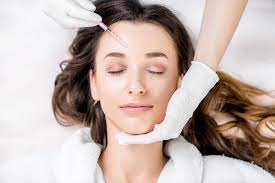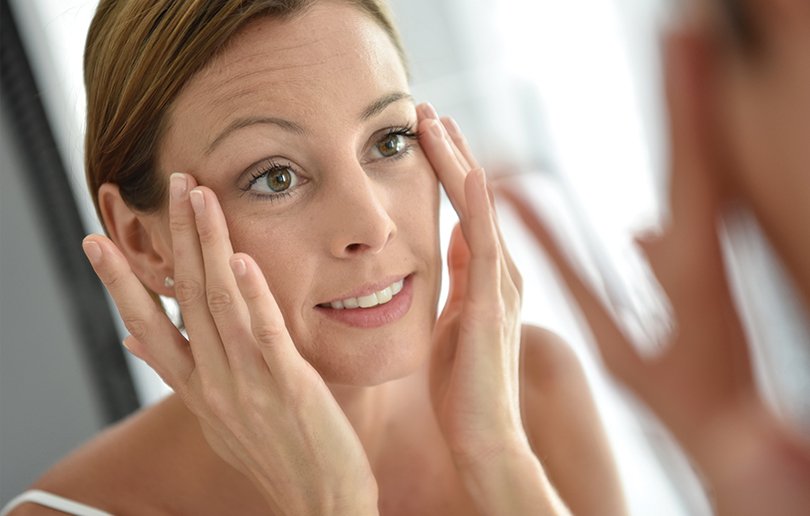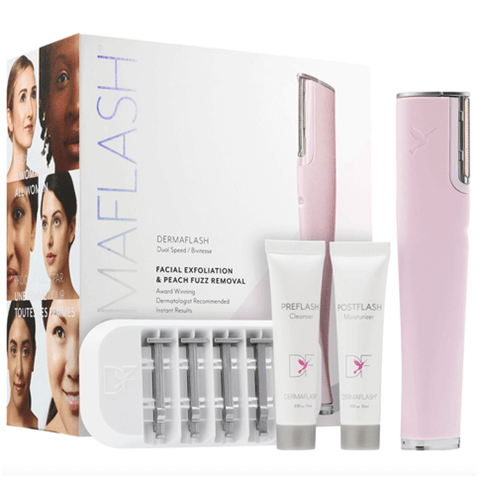Unhappy about droopy eyebrows, laugh lines, a saggy chin, enlarged pores, and acne scars? Many remedies exist for different skin concerns. A quick look through the inventory of any advanced skin care products supplier should tell you there are chemical, non-invasive, and surgical options.
Skincare products have also evolved significantly from what they used to be. You can apply products at home to help improve your skin’s texture, complexion, and tone.
The most dramatic results, of course, can be obtained through treatment at a cosmetic surgery or dermatology clinic. And you don’t need to have surgery, either. Many non-invasive solutions exist to address specific aesthetic concerns.
Here is a round-up of 5 non-surgical facial treatments you can get today.
1.Ultrasound Therapy
Ultrasound therapy is a type of treatment used for skin lifting. It works exceptionally well on the eyebrows, providing a little less than a 2-millimetre lift in controlled studies. Ultrasound therapy also leads to skin-lifting on the chin, neck, and chest or decolletage area.
How It Works
An ultrasound skin lifting therapy machine bypasses the outer skin and focuses ultrasound waves or energy into precisely mapped points of skin tissue. Ultrasound energy causes the molecules to vibrate, and this, in turn, generates heat. A temperature of 60 to 70°C is optimal.
The heat causes the collagen to break down. The contraction this causes leads to the immediate, visible lifting or tightening right after an ultrasound therapy session. However, the real, long-lasting effect can be achieved within weeks of treatment.
The body considers the broken-down collagen as thermal injuries. In response, the body initiates the wound healing process. The body repairs the broken-down tissue and synthesizes new collagen. In 10 weeks, although this could vary on a case-to-case basis, collagen replacement should be complete.
Claim to Fame
Ultrasound therapy triggers the skin into synthesizing new collagen. Since it works directly on targeted areas of skin tissue, bypassing the outer layer of the skin, there is almost no downtime.
There might be some swelling, but this could make the skin look a little plumper. There is also an immediate, tightening effect. Both of these after-effects should not cause any downtime. Instead, they provide instant, albeit temporary, aesthetically pleasing results.
But the best thing about ultrasound therapy is that it leads to collagen synthesis and replacement. The result is a natural yet visible tightening and skin-lifting in the treated areas.
2.Laser Skin Resurfacing
Laser skin resurfacing uses laser beams to even out skin tone, reduce visible acne scars, diminish enlarged pores, tighten skin, and encourage collagen synthesis.
How It Works
Laser skin resurfacing uses controlled laser energy to remove the skin’s outer layer (in ablative laser skin resurfacing) or deliver heat to targeted areas under the skin (in non-ablative laser skin resurfacing).
-
Ablative Laser Skin Resurfacing
Ablative laser skin resurfacing works by removing the outer layer of the skin. This does two things. First, it removes the problematic outer skin layer, with its issues of scarring, enlarged pores, brown spots, among others. Second, it encourages the synthesis of replacement skin.
-
Non-Ablative Laser Skin Resurfacing
Non-ablative laser skin resurfacing bypasses the outer layer and targets the skin tissue underneath. It works like ultrasound therapy, generating heat in specific areas of skin tissue, which leads to the processes that eventually end with collagen synthesis and replacement.
Claim to Fame
Laser skin resurfacing works in rejuvenating skin and minimizing fine lines. It improves skin complexion and tone, minimizing pores, diminishing acne scars, and reducing the appearance of brown spots, sun spots, and other discolorations.
However, note that laser skin resurfacing does not work in treating sagging skin.
Things to Consider
Several types of lasers are used in laser skin resurfacing treatments. Each works differently and is suitable for different applications.
For instance, CO2 lasers are typically used for treating scars, fine lines, and warts. Indeed, some lasers are better for tightening and lifting, while some work better for acne scar removal and reducing pore size.
There are also laser treatments better suited to non-Caucasians, such as Asians and African-Americans. Some ablative laser skin resurfacing methods could lead to discoloration, a concern for those with darker skin types.
3.Radiofrequency Dermal Remodeling
Radiofrequency treatment is used for skin rejuvenation and tightening, reducing photoaging, and lessening the appearance of acne scars.
How It Works
In radiofrequency dermal remodeling, an electrode (in monopolar RF and unipolar RF) or a pair of electrodes (in bipolar RF) delivers radiofrequency energy to specific points under the skin.
Like non-ablative laser skin resurfacing and ultrasound skin lifting therapy, RF dermal remodeling delivers heat to specific depths and areas of skin tissue. The heat causes collagen break-down and, eventually, collagen synthesis and replacement.
Claim to Fame
Studies have shown RF dermal remodeling to be effective in tightening lax skin and improving signs of photoaging. Research has also demonstrated its effectiveness against acne scars.
4.Chemical Peels
Chemical peels use acid solutions for skin resurfacing. The result can be quite subtle or more dramatic, depending on the strength of the chemical peel used and the frequency of application.
How It Works
Chemical peels work like you imagine they would. They peel away the dead skin cells of the outer skin layer to give way to newer skin.
In the cosmetic surgery or dermatology clinic, the doctor will swab or brush the peeling solution onto your face and leave it there to set for a while. Your outer skin layer will start peeling off in the days following the treatment, revealing the newer, smoother skin underneath.
Claim to Fame
Chemical peels can lead to a dramatic improvement in skin tone and complexion. Removing the dead skin cells and the outermost layer of the skin takes care of the usual signs of wear, such as skin discoloration, uneven skin tone, and rough texture.
Things to Consider
If you choose a mild chemical peel, you may have to repeat the process a few times every few weeks until you get the result you want.
If you choose a stronger peel, you will experience swelling and severe peeling, but the results should be more visible once the swelling and peeling pass. In this case, you can repeat the process after 6 to 12 months.
5.Botulinum Toxin Injection
Botulinum toxin injection is a cosmetic procedure used to minimize the appearance of fine lines and wrinkles, specifically those caused by the contraction of facial expression muscles.
Botulinum toxin injection generally works on the following types of wrinkles or lines:
- Vertical frown lines between the eyebrows
- Horizontal frown lines on the forehead
- Laugh lines
- Crow’s feet
- Wrinkles on the neck and chest area
How It Works
This procedure involves injecting a tiny amount of purified toxin from the botulinum bacteria, Clostridium botulinum, into specific areas of the face.
Botulinum toxin is a neurotoxin, and it works by blocking nerve signals. When injected into specific facial expression muscles, the muscles relax and are unable to contract, thereby diminishing the appearance of facial expression wrinkles and fine lines.
Claim to Fame
Botulinum injection works fast. Within three to seven days of injection, the injected areas will be smoother, and wrinkles will be less visible.
The signal-blocking effect of botulinum injection is also temporary and reversible, ensuring it is generally safe as a non-invasive procedure for wrinkle reduction.
Choose Your Treatment Option
If you have fine lines, skin sagging, acne scars, and uneven skin tone — there are surgical and non-invasive solutions to such skin concerns.
In case you are averse to surgical treatment, you have many non-surgical options. Ultrasound therapy, laser skin resurfacing, radiofrequency dermal remodeling, chemical peels, and botulinum injection are just five of them.
However, do not neglect proper skin care, which should remain a core part of your routine whether or not you choose to undergo a facial treatment procedure.






